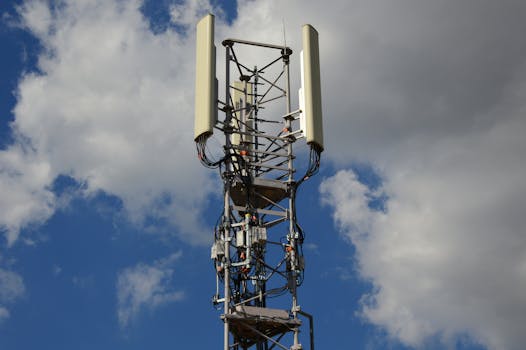5G Technology Advancements and Impact on Mobile Networks

5G Technology Advancements and Impact on Mobile Networks
5G technology advancements are revolutionizing the way we communicate and access information on the go. With the ability to provide faster data speeds, lower latency, and greater connectivity, 5G is transforming the mobile network landscape. In this article, we will explore the latest developments in 5G technology and their impact on mobile networks.
5G technology is the fifth generation of wireless network technology, designed to provide a significant improvement in speed, capacity, and reliability compared to its predecessors. The key features of 5G include ultra-high-speed data transfer rates, ultra-low latency, and massive machine-type communications. These features enable a wide range of applications, from enhanced mobile broadband and mission-critical communications to massive IoT connectivity.
Advancements in 5G Technology
Researchers and developers are continuously working to improve 5G technology, with a focus on increasing its speed, capacity, and reliability. Some of the recent advancements in 5G technology include the development of new radio frequency bands, such as millimeter wave and sub-6 GHz, which provide faster data transfer rates and lower latency. Additionally, the use of beamforming and massive MIMO (Multiple-Input Multiple-Output) technologies is becoming more widespread, enabling more efficient use of spectrum and increased network capacity.
Another significant advancement in 5G technology is the development of edge computing, which enables data processing and analysis to be performed at the edge of the network, closer to the user. This reduces latency and improves the overall performance of applications, making it ideal for use cases such as online gaming, virtual reality, and autonomous vehicles.
Impact on Mobile Networks
The impact of 5G technology on mobile networks is significant, with the potential to transform the way we communicate and access information on the go. With 5G, mobile networks can provide faster data speeds, lower latency, and greater connectivity, enabling a wide range of applications and use cases. For example, 5G enables the widespread adoption of IoT devices, such as smart home appliances and wearables, which can communicate with each other and with the cloud in real-time.
5G also enables the development of new services and applications, such as enhanced mobile broadband, mission-critical communications, and massive IoT connectivity. These services and applications have the potential to transform industries such as healthcare, transportation, and education, and to improve the overall quality of life for consumers.
Conclusion
In conclusion, the latest advancements in 5G technology are transforming mobile networks, enabling faster data speeds, lower latency, and greater connectivity. As 5G technology continues to evolve, we can expect to see even more innovative applications and use cases emerge, transforming the way we communicate and access information on the go. With its potential to enable a wide range of applications and services, 5G is set to play a critical role in shaping the future of wireless communication.